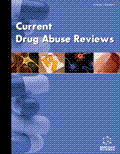
Abstract
Hangover may be related to propensity to develop alcohol use disorders (AUDs). However, the etiological role, if any, played by hangover in AUD is unclear. From a motivational perspective, hangover can be construed as either a deterrent to future alcohol consumption or a setting event for negative reinforcement that could promote deviant drinking practices (e.g., “hair-of-the-dog” drinking). Hangover could be related to AUD risk even if it does not play a direct role in promoting or inhibiting near-term drinking. For example, measures of hangover might serve as symptoms of AUD or as markers of individual differences that more directly account for AUD risk. Empirical evidence (though usually indirect) exists to support contentions that hangover is related to both risk for and protection from AUD. In this article, we briefly address variation in assessment strategies in existing hangover research because measures of hangover frequency and hangover susceptibility may prove to have different correlates. Next, we review the existing, limited evidence on relations between hangover and AUD risk. Finally, we sketch a variety of theoretically-informed hypotheses that might help delineate productive lines of inquiry for this emerging field.
Keywords: Hangover, alcohol, alcohol use disorder, risk, individual differences, AUDs, Hair-of-the-dog, Heavy drinking, Alcohol consumption, Alcoholism, Alcoholics, Headache, Placebo, Intoxication, Hangoverlike experiences, HLEs, Telescoping, Breath alcohol, BrAC, Pharmacokinetics, Blood alcohol, Smoking, Tobacco, caffeine, Alcohol Metabolizing Genes, Acetaldehyde, Ethanol, Facial flushing, Tachycardia, Nausea, ADH, ALDH, Short Michigan Alcoholism Screening Test (SMAST), MacAndrew scale, Alcohol abuse, Pharmacotherapy, Flushing syndrome, Conditioned Taste Aversion, Koob, &, LeMoal's allostatic model, Nonalcoholics, Homoreflexive, Alcohol withdrawal, DSM-IV, Alcohol metabolism
 9
9














